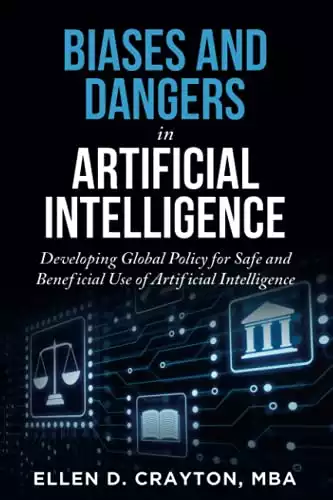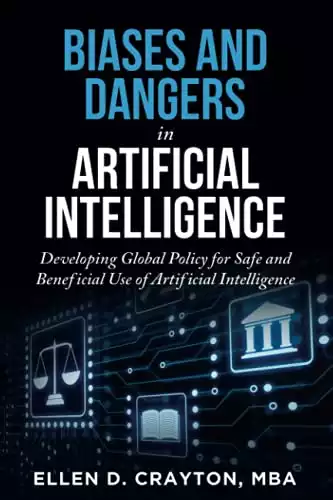Introduction to AI Bias and Discrimination
Artificial intelligence has become a cornerstone in various industries. As its capabilities expand, so does the need for scrutinizing its flaws. One significant issue is bias, which can affect how AI systems make decisions, sometimes causing serious consequences.
Bias in AI often originates from the data on which these algorithms are trained. When this data contains ingrained societal prejudices, AI systems can perpetuate or even exacerbate these biases. The result can be discriminatory practices that have real-world impacts on individuals or groups.
Therefore, the need to address bias is not merely a technical challenge but a societal imperative. Tackling this issue is crucial for the ethical development and deployment of AI technologies. Understanding the nature and origin of bias is the first step in mitigating its impact and ensuring that AI systems are both fair and effective.
Table Of Contents
Historical Roots of Bias in AI
Early AI models often relied on simple algorithms and limited data. As the field matured and machine learning techniques became more advanced, the scope for learning biases from that data also grew. Historical data often contain traces of social biases like gender discrimination or racial prejudice.
When AI systems are trained on biased historical data, they can absorb these prejudices, which then become part of their decision-making process. This is problematic because these systems are often viewed as objective or neutral, even when they are perpetuating long-standing societal biases.
Given this background, it becomes evident that scrutinizing the data and the algorithms is essential. Without understanding the historical context, it is difficult to identify the potential biases that an AI system may propagate. Therefore, historical scrutiny is a necessary step in the development of fairer AI systems.
Types of Bias in Machine Learning Models
Bias can manifest in several forms within machine learning. Data sampling bias occurs when the training data is not representative of the population it’s meant to serve. Another type is labeling bias, in which the labels used in training data are influenced by societal stereotypes or prejudices.
Algorithmic bias occurs when the algorithm itself has elements that produce biased outcomes. This can happen unintentionally during the feature selection process or due to the mathematical model applied. Therefore, it’s crucial to evaluate both data and algorithms to ensure fairness.
Finally, there’s evaluation bias, where the metrics used to assess a model’s performance do not adequately measure its fairness. This often results in models that may perform well according to a given metric but are still biased in their predictions.
Data Collection and Inherent Biases
Data forms the backbone of any AI system. If the data collection process is flawed, it can introduce several types of biases into the resulting model. For example, if a facial recognition data set is primarily composed of images of people from one ethnic group, the system will be less effective at recognizing people from other ethnicities.
Bias can also be introduced during data labeling. If those labeling the data carry their own biases or misconceptions, these can be transferred into the training data and consequently the AI system. Therefore, the data collection and labeling processes need to be designed carefully to minimize these risks.
The source of the data also matters. Using publicly available data might seem convenient, but it may contain hidden biases. A thorough vetting process can help identify and correct these before they become part of the AI system.
Gender Bias in AI Algorithms
Gender bias in AI algorithms can have adverse effects on social justice by perpetuating discrimination against people based on their gender identity. This discrimination issue extends into multiple fields, from natural language processing to image recognition, impacting the way these systems interact with individuals. For example, AI systems can inadvertently perpetuate gender gaps in employment by sorting resumes in a way that disadvantages women or non-binary individuals.
In some cases, the biases in AI models can produce inaccurate or unfair outcomes in healthcare diagnostics or job applicant screenings. This perpetuates existing gender disparities and social inequalities, creating a cycle that is hard to break. The consequences can be far-reaching, affecting various aspects of life including economic opportunities and access to healthcare.
Mitigating gender bias is a complex but crucial endeavor. Techniques like re-sampling training data and re-weighting training classes are commonly used to promote counterfactual fairness. Despite these efforts, the complete elimination of gender bias in AI remains a formidable challenge that demands sustained attention from both researchers and practitioners. This involves not just technical adjustments but also a commitment to recognizing and addressing the broader societal implications of biased algorithms.
Racial and Ethnic Discrimination in AI
Racial and ethnic bias in AI has been evident in various domains, most notably in facial recognition technology and algorithmic decision-making in sectors like law enforcement and healthcare. Discriminatory effects in these areas not only violate an ethical framework but also propagate systemic racial disparities. These issues can stymie economic growth by limiting equality of opportunity and perpetuating existing social injustices.
Recognizing and addressing these biases requires a multi-layered approach. Organizations and developers must engage with community leaders and experts to better understand the unique challenges and implications that their AI systems may pose on diverse racial and ethnic groups. This community engagement is essential for developing an approach to fairness that accounts for the varied experiences and challenges faced by these communities.
To tackle this significant issue, tools designed to detect and mitigate racial and ethnic bias are under development. These tools often employ fairness metrics aimed at assessing the discriminatory impact of an algorithmic model on various demographic groups. Such metrics are especially useful in revealing biases in areas like discriminatory hiring practices, where the use of algorithms can either entrench or alleviate systemic inequality. These ongoing efforts are essential for making artificial intelligence a force for inclusive progress.
Socioeconomic Bias in AI Systems
Socioeconomic bias in AI can manifest in numerous ways, often reinforcing existing inequalities. For example, credit-scoring algorithms may favor individuals with a certain type of employment or educational background, thereby discriminating against those who don’t fit the profile.
It’s vital to evaluate how AI systems impact people across different socioeconomic backgrounds. This includes examining whether the system’s predictions or recommendations unintentionally favor one group over another due to the influence of socioeconomic factors in the training data.
Efforts to combat socioeconomic bias often involve adapting algorithms to be more equitable, or using different evaluation metrics that measure performance across a range of socioeconomic variables. Despite these efforts, ensuring complete fairness remains a challenging endeavor.
AI Bias in Criminal Justice
AI in the criminal justice system leverages cutting-edge technology like facial recognition for tasks ranging from predictive policing to bail assessments. Yet, these digital technologies can inherit sampling bias from historical criminal records, thereby perpetuating a risk of bias that can affect millions adversely. For instance, an AI model trained on biased data could lead to a discriminatory outcome, such as harsher sentencing for specific demographic groups.
Bias within AI tools used in criminal justice can exacerbate existing disparities, with disparate impacts on different communities. Predictive policing algorithms might disproportionately focus on certain neighborhoods, based on flawed or biased historical data, rather than a fair assessment of current risk. Similarly, algorithms used for assessing bail or sentencing could, if biased, result in outcomes that do not promote justice but rather deepen existing inequalities.
To rectify these issues, a multi-disciplinary approach is essential. Technologists must collaborate closely with legal experts and policymakers to develop AI systems that are both innovative and equitable. Establishing guidelines and best practices for the ethical use of AI in criminal justice is critical. These guidelines could dictate how credit scores, for example, should or should not be used in determining bail amounts, thereby ensuring that the technology serves the goal of fairness rather than perpetuating existing injustices.
Discrimination in AI-Powered Healthcare
AI has shown promise in revolutionizing healthcare, but its potential for bias poses challenges. For example, diagnostic algorithms trained on data primarily from one demographic may not perform well for others, possibly leading to misdiagnoses or ineffective treatments.
Bias in healthcare AI can have life-altering consequences. If a diagnostic algorithm has biases against certain racial or ethnic groups, it could result in unequal access to life-saving treatments or preventive measures. There’s an urgent need for inclusivity in medical datasets and more robust validation methods.
Efforts are underway to ensure that AI applications in healthcare undergo rigorous ethical review to identify and mitigate any form of discrimination. Equally important is the need for collaboration between data scientists, healthcare professionals, and ethicists to ensure that AI is applied in a manner that is just and equitable for all.
Ethical Challenges and Moral Dilemmas
Addressing bias in AI isn’t just a technical issue; it raises a host of ethical questions and moral dilemmas. For example, what does it mean to create a “fair” algorithm, and who gets to define what fairness is? Ethical considerations extend beyond eliminating bias to asking profound questions about the role of AI in society.
Ethical solutions may involve trade-offs, such as choosing between different types of fairness or between accuracy and fairness. Decision-makers must be sensitive to these complexities and willing to engage in ethical reasoning and debate.
Industry bodies and ethics committees are being formed to tackle these issues. They aim to set standards and best practices that encompass not just the technical aspects of eliminating bias, but also the ethical considerations that guide the use and development of AI technologies.
Also Read: Top 5 Most Pressing Artificial Intelligence Challenges in 2023
Real-World Consequences of AI Bias
Bias in AI isn’t an abstract problem; it has tangible impacts on individuals and communities. From job recruiting to loan approval to law enforcement, biased algorithms can perpetuate discrimination and inequality.
The stakes are high. A flawed algorithm can negatively affect people’s livelihoods, freedom, and even their lives. Such real-world impacts make it imperative to address AI bias comprehensively and urgently.
There’s also the risk that AI bias could erode public trust in these technologies, impeding their beneficial uses. Transparency in how algorithms work and make decisions can help rebuild that trust and pave the way for more equitable AI systems.
Regulatory Approaches to Combat AI Bias
To combat the issue of bias, legislators are starting to draft regulations that set standards for AI ethics and fairness. For example, the U.S. Algorithmic Accountability Act aims to make companies accountable for the automated decision-making systems they use. Regulatory oversight is necessary to ensure that organizations do not merely pay lip service to fairness but implement it in practice.
Regulatory approaches also focus on accountability and transparency. Businesses could be required to disclose the data sets they use for training and the techniques they use for data collection and analysis. Such regulations could help make sure that organizations rectify biased algorithms and offer redress to those adversely affected.
Public and private sectors need to cooperate in drafting and enforcing these regulations. By involving multiple stakeholders, including civil liberties groups and the public, the regulatory framework can be both robust and flexible, adaptable to the fast pace of technological changes.
Also Read: Democracy will win with improved artificial intelligence.
Future Directions for Bias-Free AI
Efforts to address bias in AI are gaining momentum, driven by increasing awareness and technological advancements. New methodologies, such as fairness-aware machine learning and ethical AI frameworks, are emerging to make algorithms less biased and more accountable.
The involvement of social scientists and ethicists in the development process also marks a shift towards a more interdisciplinary approach. By combining technical expertise with insights from social science and ethics, future AI systems can be designed to be both highly effective and socially responsible.
As the technology continues to evolve, the strategies for achieving fairness in AI will likely become more sophisticated and comprehensive. From academic research to industry practices, the goal is a future where AI serves all of humanity without prejudice or bias.
Also Read: Top Dangers of AI That Are Concerning.
Conclusion: Strategies for Mitigating AI Bias and Discrimination
Mitigating bias in AI calls for a comprehensive risk assessment that goes beyond algorithmic tweaks. The goal is to understand the foundations upon which biased outcomes are built. This includes a deep dive into the data that trains artificial intelligence systems, the metrics used to evaluate them, and the context in which they are deployed. It’s not just about improving human intelligence about how AI works; it’s also about making AI itself more intelligent in terms of fairness and equity.
Correcting biased algorithms involves more than just technical adjustments; it also necessitates an ethical lens. Concepts like counterfactual fairness can be applied to examine what would happen under different conditions, providing a nuanced approach to fairness. Other ethical frameworks can guide the design of AI in sectors with a high risk of bias, such as facial recognition technology in law enforcement, to ensure that disparate impacts are avoided or minimized.
Finally, the battle against AI bias must be a collective effort involving multiple stakeholders. Policymakers, developers, and the general public need to collaborate to create robust guidelines for ethical AI use. In fields such as healthcare, criminal justice, and finance, where algorithmic decision-making has the potential to exacerbate existing gender gaps or other inequalities, a cohesive, multi-stakeholder strategy is crucial for developing AI systems that are not just advanced but also fair and just.
References
Müller, Vincent C. Risks of Artificial Intelligence. CRC Press, 2016.
O’Neil, Cathy. Weapons of Math Destruction: How Big Data Increases Inequality and Threatens Democracy. Crown Publishing Group (NY), 2016.
Wilks, Yorick A. Artificial Intelligence: Modern Magic or Dangerous Future?, The Illustrated Edition. MIT Press, 2023.












